IS-7
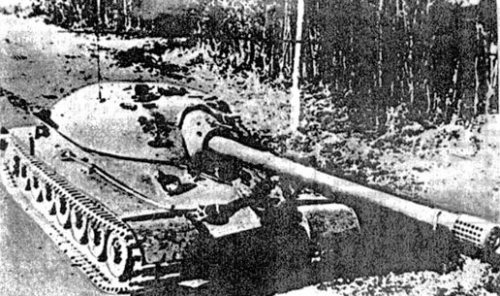
You have a deal, my dear Mr. Tiger 205! In the meantime I have already checked all available data, and I am assuring you that all those pictures are published in the “Regiment” No. 3/2006, p. 15 (article “Acélkoporsók” by Kovács Vilmos). 
In the intervening time, I have the pleasure to present here one pretty rare color snapshot which is directly connected with our steal beast, namely this one:
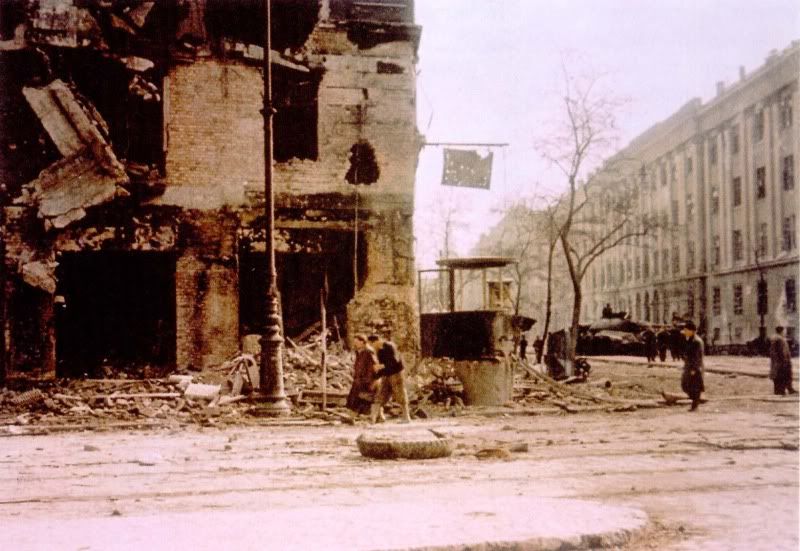
Knocked-out IS-3 – Budapest, 1956 [the corner of József körút (Joseph boulevard) and Üllői út (Üllői Avenue)]. Photo taken by Mr. József Vas
After all – this website is known as the historical sanctuary to every single devotee of color snapshots. 
And unlike you, my dear Mr. Tiger 205, I think that the IS-3 is only fairly misjudged. If we reconsider the fact that its well sloped armor was almost impenetrable to the majority of already existing anti-tank weapons, that its gun was more than adequate to deal with almost everything on the battlefield in those days, and if we do reconsider numerous other numerical indicators (power-to-weight ratio, dimensions, specific ground pressure of the vehicle, radius of action, etc.), then those words of an true expert of the tank warfare, and also my personal consultant in numerous issues connected with armored fighting vehicles – Dr. Ferdinand von Senger und Etterlin – do seem valuable in this specific field:
“…rational construction of the frontal part of the hull and the turret is worthy of the very best grade. Besides that, this tank is distinguishing itself with a very small height. In year of 1956 the IS-3 tank reserves to itself the combination of best heavy fighting machine qualities.”
Yes, I know my dear Mr. Tiger 205 – IS-3 (unlike the IS-7, obviously dearly beloved by our esteemed colleague Mr. Egorka as well, or those forgotten armored Objects designed by the VNII-100) is not representing the ideal combat vehicle, but just imagine an everlasting hour of pure joy while driving this beauty up and down over the Liebenwerdaer Heide, while your 10-RT tank radio set is continuously delivering into your ears those joyful verses Früh am Morgen erwacht unser Städtchen…
True happiness may be sought, or thought or caught - but never bought, my dear Mr. Tiger 205. Therefore, just follow this link, and use your own imagination:
http://www.youtube.com/watch?v=GWhref2gmyM
I wish you many moments of unadulterated enjoyment. See you after the May Day parade. 
Hello Tiger.
I have read the simular story about tank’s “gun competition”.
But mr Librarian is damn accurate as always - his Library is full of secret knowledges that we can’t read until he post it on the forum…
Oh, thank you very much for your compliments, my dear Mr. Chevan. You know, we – nowadays not so Young Pioneers – are always somehow inclined toward the technical progress. 
And our special guest star actually initialized numerous experimental vehicles, like this pretty unknown piece of self-propelled artillery:
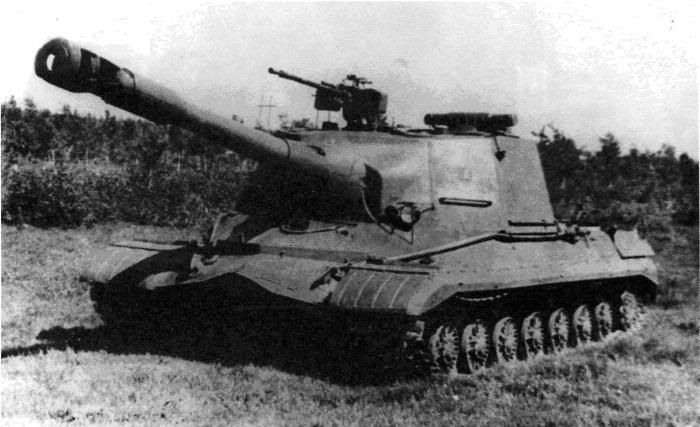
Object No. 268 – a 152mm self-propelled gun-howitzer on a modified IS-3 tank chassis
At first sight, honorable ladies and gentlemen, there seems to be little difference between a tank and a self propelled artillery gun. Both are on tracks, and both have a gun. The essential difference is that of role. While tanks are designed to primarily engage other armored vehicles that they can see to aim (this is called direct fire), artillery fires at targets at up to ten times the range of a tank, and usually ones which the gun crew cannot see themselves.
Soviet doctrine always stated that without artillery’s ability to lay down accurate and quick heavy supporting fire battles could not be won. Hence, Soviet command always supported artillery on tracks, especially that one equipped with noteworthy armor protection, and the means to propel itself without the help of other vehicles.
In 1956 a new, officially never adopted, but very intriguing heavy armored assault gun on the IS-3 basis was introduced. Designated as Obiekt 268 (268th development project), it consisted of a simple, but very strong armored box superstructure, outfitted with an improved variant of the well-known 152 mm gun-howitzer, this time moderniyed with a gas-evacuator. The prototype has successfully passed all trials in 1956, but due to large numbers of already existing ISU-152s in service this design newer was accepted for serial production.
Well, that’s all for today. In the meantime, as always – all the best!
![]()
My Dear Friends,
thanks for your quotes.
i have never ever underestimated the IS-3 armour and main gun caliber, but reliability for me is something different.
As my sources are right, the power train (engine?) had continuous problems, and never forget, the main armament (D-25 gun) is originated form a filed artillery piece, so it was relative slow and it had few (28 pcs?) ammo …Very good shape turret - not useful for the good negative angel
That’s why I have reservations about IS-3…

József krt. / Üllői út was a dealy place tor the conquerors - as it was controlled by the AP guns of the freedom-fighters’ main centre in the Corvin alleyway…
The huge building in the background is the “Kilián” barracks…
The Corvin alleyway was an ideal place for defence.
VERY NICE Photo indeed!
Thanks!
“Object No. 268 – a 152mm self-propelled gun-howitzer on a modified IS-3 tank chassis”
Doesn’t look like an IS-3 chassis. Too many road wheels for it only had 6.
- Jeff
Don’t believe the gossip, my dear Mr. Tiger 205. After all, when those usual childhood diseases (otherwise completely natural) were cured, the IS-3 matured and turned out to be a very reliable vehicle. This stance was confirmed by retired Soviet colonel Dmitri Rotar, who has been ex-commander of the Heavy Tank Regiment within the 33rd Guard Kherson Mechanized Division of the Soviet army in mid fifties. By his own words: “I was ordered to participate to suppress infamous rebellion in Budapest, Hungary in 1956. At that moment my unit was located in Romania, 350 kilometers away, so I was ordered to make a fast march to Budapest. My regiment drove at max speed, it was very intensive for heavy tanks, and I must say there were no breakdowns at all! Not a single tank was broken during this route! This is a clear example I think. JS-3 was not unreliable, it was simply underrated.” 
Also I really don’t know why those really well-known characteristics of the D-25 main gun still are representing some source of misinterpretation. Yes, my dear Mr. Tiger 205 – the D-25 indeed possessed a sluggish rate of fire (3 rounds per minute), but in factual combat that characteristic never represented some real problem. After all, just call to your mind those truly interesting experiences of the Guards Lieutenant V. A. Udalov, who knocked out without a hitch 3 King Tigers with his IS-2 tank (equipped with that slow-firing D-25 cannon) in an encounter in the area of Sandomierz in august of 1944.
Also, in numerous discussions it is also frequently forgotten that the Soviet OF 471 high explosive and fragmentation shell actually possessed certain characteristics of the so called High Explosive Squashead projectile. You see, when that heavy chemical energy round smacks into the enemy tank and when the fuse detonates the explosive, the resulting explosion sends heavy shock waves through the armor, causing pieces of it to break off on the inside and to fly around the turret and hull and to hurt the crew. That quality was also very usable against numerous soft targets and objects of heavy defensive fortification.
But I do agree with you that something significantly better, something really more powerful is necessary for our master weapon of war. Perhaps some variant of that Soviet heavy 152 mm AA monster, known as the KM 52 is much better solution for our ideal tank. To hell, our perfect vehicle deserves the full-automatic horizontal sliding wedge breech, a power rammer and an automatic fuze setter! Furthermore – we do need a special electromechanical fire control system and the fixed-charge ammunition, as well as the artillery locating radar with some anti-aircraft abilities. In that case we will have unprecedented rate of fire (at least 17 heavy 49 kg shells in every minute), unrivaled range (33 km!), and unparalleled capability of penetration (450 mm of armor at 1500 m using APSFSDS with a hafnium-carbide core)!
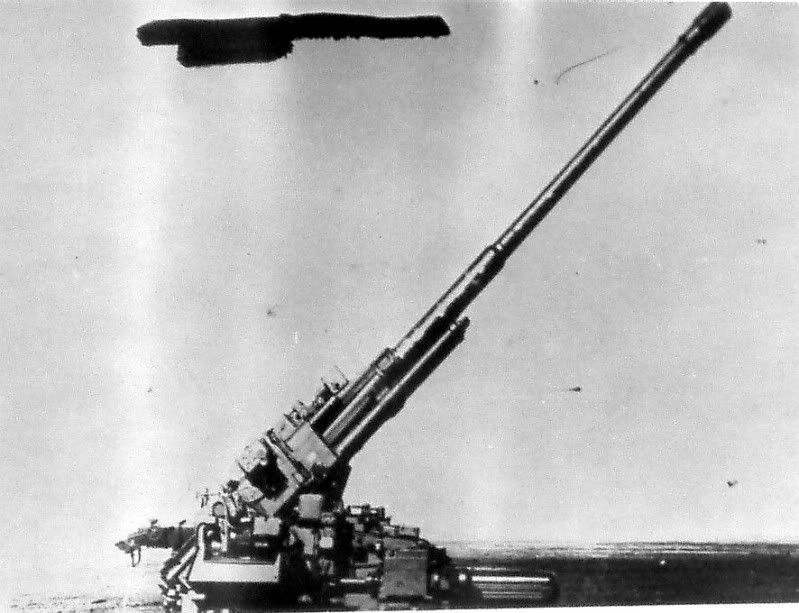
KM 52 – super-heavy Soviet anti-aircraft gun, 1952
And please remember, my dear Mr. Tiger 205 – only the best possible is good enough for us! :army:
Also, I must say that I am pretty confused due to that most argument of yours relating to “not useful for the good negative angle”.
Allow me a tiny explanation, my dear Mr. Tiger 205. You see, actually we are talking here about a typical Durchbruchswagen – a breakthrough vehicle. Essentially, we don’t need that hull-down ability. Our vehicle is a master weapon of attack, it already has an excellent armor protection, it already is very low, we have massive pre-planned indirect artillery fire on our disposal and defilade or hilltop defense firing is not our beloved kind of activity. Actually, our potential enemies with their almost half meter higher silhouette and much weaker hull protective armor, and those highly inflammable petrol engines are almost in fixed necessity to do that. They do need those prepared positions and additional hard cover behind a raised ground. But we don’t need those palliative tactical measures! We have ten seconds to strike, and a single hit from our main gun will do the thing. If we are near to the enemy, we shall move at top speed while being covered by other tanks from static positions. Besides, quantitative superiority is already on our side.
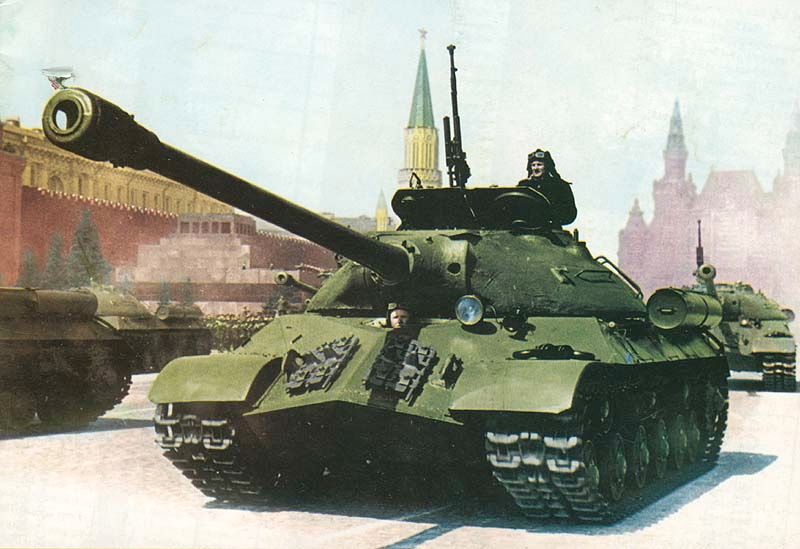
IS-3
Maybe our tank is not very eye-catching on the battlefield, but when it is used its effect will be just as decisive as it has always been. 
Doesn’t look like an IS-3 chassis. Too many road wheels for it only had 6.
Well, I have already used that expression MODIFIED CHASSIS, my dear Mr. Panther F. 
In the meantime, as always - all the best.
Have a nice day, Mr. Librarian!
No doubt - marching 350 km is a very heavy task - just for the tracks for example - but i still do not understand, IF JS-3 was successful, why the old JS-2 M over-served it with decades???
Anyways, we will (maybe) never understand the Soviet logic in weapon development and implementation… 
The gun had no “BIG” problems (OK, maybe the elevation), as we consider that JS series was made for breakthrough tasks, not for anti-tank role.
The monster gun (IMHO) is totally unnecessary, as
- too heavy, too long for tank-installation
- anyways, the Soviets had NO optics (and computers) that time to control such a powerful punch.
The low rate of fire - IMHO once more - in critical situation was more dangerous - than the AP capability…
Related to UDALOV:
Prejudiced Russian source say:
“The reasons behind the Sandomierz King Tiger fiasco include cleverly prepared Soviet defenses and, without a doubt, the high level of professionalism of Soviet tank crews. The Germans failed due to faulty planning and tactics, and particularly because of the direction of the attack for the 70-tonne King Tigers.”
So (by my words):
- 11 Tiger(B) were able to fight from the whole battalion (Abteilung)
- Very bad Recon from German side
- Foggy morning,
- JS-2’s in ambush with experienced and brave commander,
- medium distance
- inexperienced German crew
And the result is given…
Oh, I always do have a nice day when I am chatting about different technological and tactical issues with you, my dear Mr. Tiger 205. 
So let’s go to work:
… I still do not understand, IF JS-3 was successful, why the old JS-2 M over-served it with decades???
That issue probably has certain connections with the costs of maintenance to keep them working. As you know, after all modifications weight of the JS-3 M had increased up to 48.8 tones, and main wheel bearing shells probably suffered from increased rate of wear and tear.
The monster gun (IMHO) is totally unnecessary, as
- too heavy, too long for tank-installation
- anyways, the Soviets had NO optics (and computers) that time to control such a powerful punch.
On the contrary, my dear Mr. Tiger 205 – superior gunnery is a key for the victorious combat engagement. You know, with certain modifications that cannon (although a rifled one!) would have been the most powerful dual-purpose gun system in the world even today.
Appropriate usage of light alloys, implementation of power-assisted servo-mechanisms, application of the radically new designing concept with a reduced crew to only two man positioned all in the hull, implementation of the main gun directly positioned inside the rotative omni-directional armored basket (loaded fully automatically rather than by one or two members of the crew) use of multi-layered armored protection combined with an extremely powerful two-stroke Diesel engine, as well as with completely sealed and blast-secured combat department is completely capable to achieve a completely new master weapon of war – unbeatable in direct engagement with all enemy tanks.
Briefly, my dear Mr. Tiger 205 – our goal is some 60 or 70 metric tons heavy variant of this already planned armored beauty:
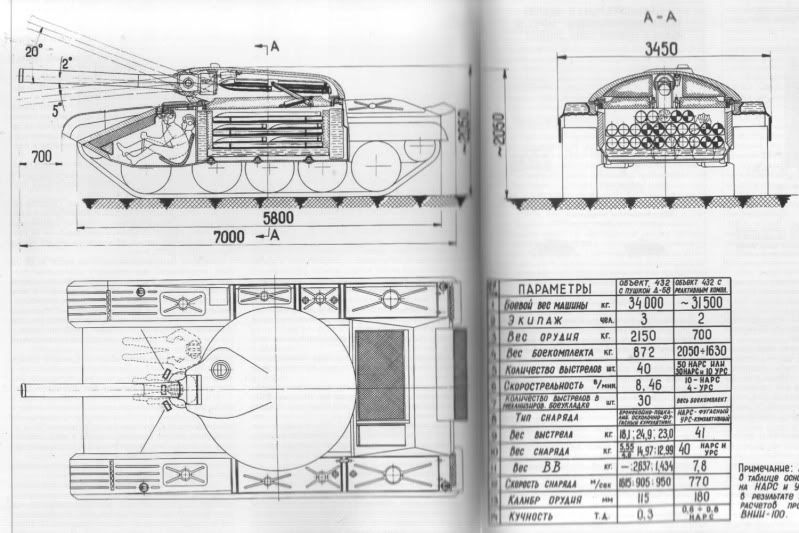
Object 432 – VNII 100
Of course, some other possibilities are on our disposal as well. Just imagine, for example, a combination of the Obiect 279 chassis with a new two-man-in-the-hull concept, significantly increased combination of the laminar and spaced armor, autoloader, radar-enhanced electro-mechanical fire-control mechanism, and the Balandine-type of 12 cylinder four-block omnivorous two-stroke turbo-compound Diesel engine with a 4500 HP output:
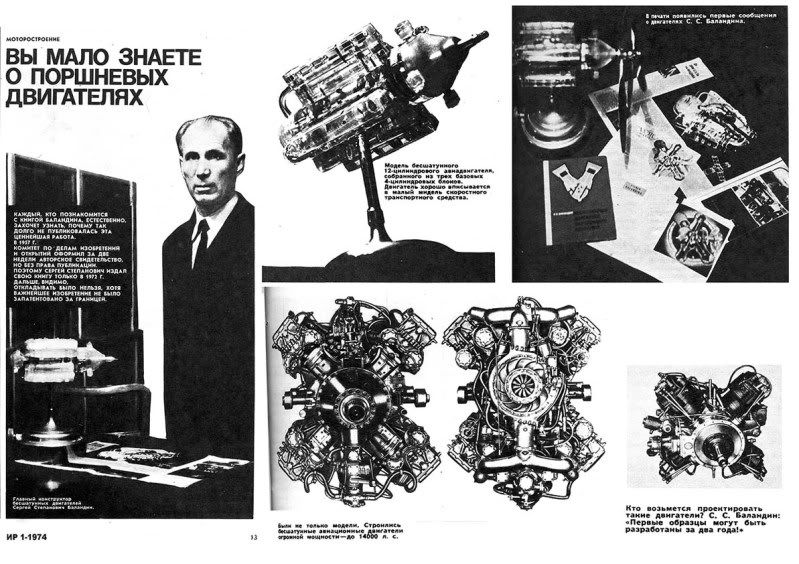
Balandine - OM-127 RN Diesel
As always – power-to-mass ratio is the key to our success. 
And once again – don’t believe those ignominious anti-technological gossips, my dear Mr. Tiger 205. Soviets actually had envisioned that radar-rangefinder enhanced optical T2-S gunsight back there in 1959.
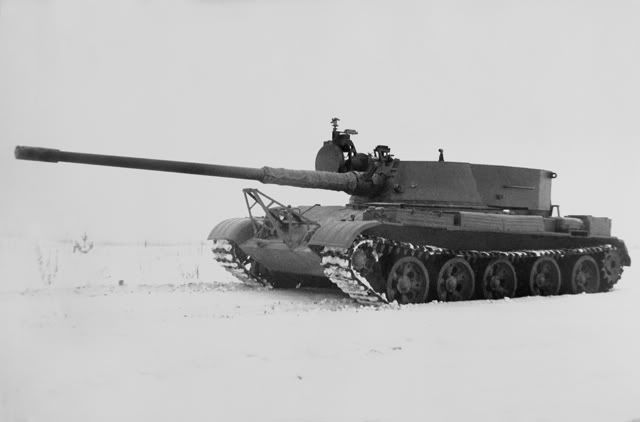
Soviet experimental radar rangefinder on the T62 tank
Now, just imagine a little bit more developed variant, paired with that 152 mm long-range monster… Fogs, dust, hours of darkness, are not a problem for us any more! 
The low rate of fire - IMHO once more - in critical situation was more dangerous - than the AP capability
Would you be so kind to give us a little bit more detailed description of the phrase “critical situation”, my dear Mr. Tiger 205. And by doing so, please don’t forget one especially important issue: fact that our numerical superiority (read: ability for an intense overlapping fire) is already achieved.
…JS-2’s in ambush with experienced and brave commander.
A tiny Addendum, my dear Mr. Tiger 205: that third King Tiger actually was destroyed when Lieutenant Udalov broke his cover and advanced towards the enemy, firing again from the edge of a wood. That accomplishment was almost a perfect demonstration of a genuine, completely mobile pattern of offensive armored combat.
Well, that’s all for today, my dear Mr. Tiger 205. In the meantime, as always – all the best. 
One of the most used mantra’s of the fan-boys. There are field reports in one of Jentz’s Tiger books where the German crews complain about fire from IS-2’s that hit then first shot at long range. A Bovington report done on a T34/73 in 1943 comments on the simplicity of the design of the tanks optics whilst saying how good they were. Sadly I do not have the full report on the optics but clearly the Soviets did have effective and accurate sights.
Perhaps someone has information on wartime Soviet optics? I understand they copied German designs and then we can get away from this fiction that they did not have anything that worked properly.
I have experience just with T-34 and T-55 optics.
They (EVEN the T55) were not enough to control such a monster (powerful) gun!
I was talking about the KM-52…
This is not a simple 122 mm!
Please examine the British problems to aim the 120 mm rifled gun of the Chieftain until the advent of the computer era (20 mm gun, etc.)
Hello My dear Friend, some of my answers (I TRY, although I will be in county-side whole next week and I was sick in the last days)
Do not forget, I am not an expert, just an amateur with some ideas! 
"Soviets actually had envisioned that radar-rangefinder enhanced optical T2-S gunsight back there in 1959. "
And why not introduced it? 
“Would you be so kind to give us a little bit more detailed description of the phrase “critical situation”, my dear Mr. Tiger 205.”
Usual combat distance on fog of war during a combat situation, human status (injuries OR JUST fear, blood preasure, etc…) air strikes, artillery fire, radio contact (with or without, etc…)
This is also part of my answer for MY questions about your whole story about the unbeatable Objekts - "why not implemented, introduced them?
The answer simply: What for?
Warsaw Pact had mass armies, trained for mass breakthrough over the Main German plains and the secondary theatres - against armies with less tanks - so what they wanted is a MBT, not a super hyper Heavy tank!
The main aim was to reach Paris, not to fight against tanks 
THE IRON FIST!!!
[i](by the way, do you know the old Soviet joke? I try, maybe not)
Two Soviet Tank Generals drinking champagne during the victory ceremony after the big Eurpoeran war (3rd WW ?) IN PARIS.
suddenly one of them ask the other:
- By the way, Serjosha, do you have any idea who won finally the air war?[/i]
Oh, is that your professional engineering opinion, my dear Mr. Tiger 205? Excellent. Please, proceed and give us a little bit more detailed explanation of this intriguing matter. And don’t worry – I am completely able to understand the power-flow block-diagrams of multi-station, non-linear unit-built work-flow lines, with all those transducers, measuring circuits, relays, amplifiers and actuators. You know, I was fortunate to have some good teachers, namely professor A. N. Malov, and assistant professor Yu. V. Ivanov. 
And I think that I do have some scientific recommendations for you too. Please, concentrate yourself upon the British heavy tank called Conqueror. And after that please read these highly intriguing articles:
“Un Chieftain ameliore pour l’Iran”: REVUE INTERNATIONELE DE DEFENSE, 1976. – Vol. 4
Ogorkiewicz, R.: “Tank fire and gun control systems”: INTERNATIONAL DEFENSE REVIEW, 1976. – No.1
Drosen, E.: “Das automatische Laden der Panzerkanone”: SOLDAT UND TECHNIK, 1983. – No. 10
And why not introduced it?
Well, basically due to lack of good sense in high places. 
In the meantime, as always – all the best. 
tanks
http://otvaga2004.narod.ru/photo/photo_razd_03.htm
http://otvaga2004.narod.ru/photo/photo_razd_01.htm
Из разных стран мы смотрим на одни и те же сцены лишь герои разные. 
Interesting, nice websites, but maybe not in the right thread.
